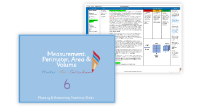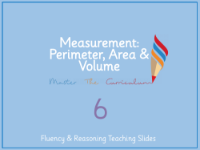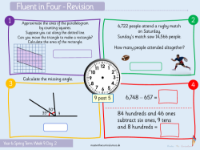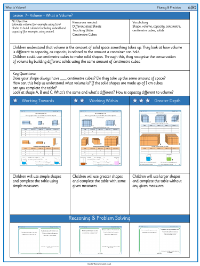Perimeter, Area and Volume - What is volume? - Planning
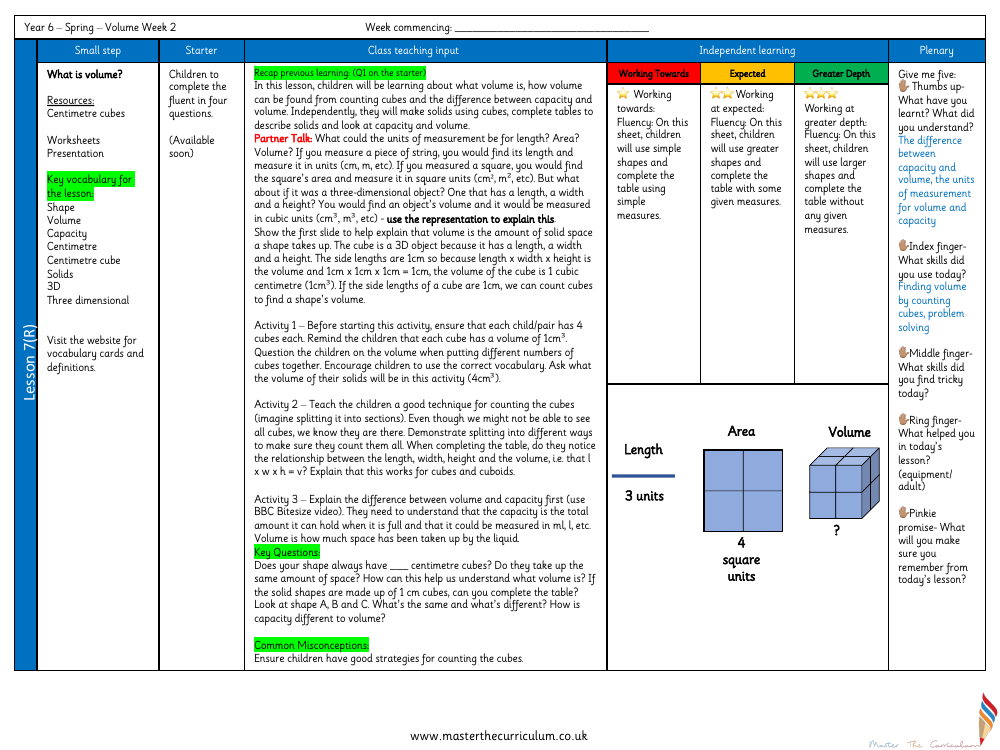
Maths Resource Description
In a comprehensive lesson intended for Year 6 students, the concept of volume is introduced and explored through hands-on activities and visual presentations. The lesson aims to differentiate between volume and capacity, teaching children how to calculate the volume of three-dimensional shapes using centimetre cubes. Key vocabulary such as 'shape', 'volume', 'capacity', and 'three-dimensional' is emphasised, with resources available to reinforce the terms. Students begin by reviewing what they've learned previously and then engage in a discussion about the units of measurement for length, area, and volume. A presentation aids in explaining that volume is the measure of how much solid space an object occupies and is expressed in cubic units such as cm³ or m³.
During the lesson, children participate in various activities that involve manipulating centimetre cubes to construct solids and comprehend the concept of volume. They are encouraged to use the correct terminology and consider the volume of different arrangements of cubes. A technique for counting cubes is taught to ensure accuracy, even when some cubes are not visible. Students also explore the relationship between an object's length, width, height, and volume, specifically focusing on cubes and cuboids. The lesson includes a video to clarify the distinction between volume and capacity, with capacity being the amount a container could hold when full, measured in millilitres or litres, and volume being the space occupied by a solid. By the end of the lesson, students are expected to understand these differences, use problem-solving skills to find volume, and remember the units of measurement for both volume and capacity. Differentiated activities cater to varying levels of understanding, from simple shape recognition to complex spatial reasoning without given measures.
